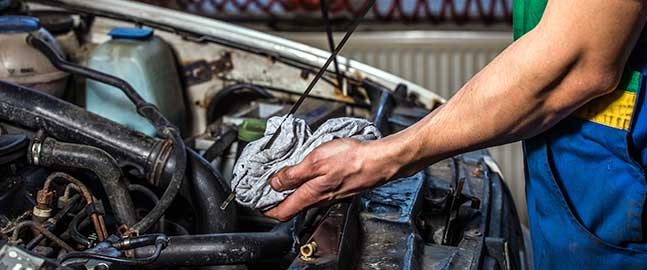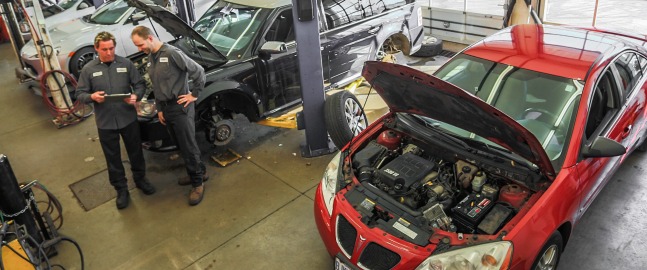
Honda’s venerable compact car, the Civic, is one of the most popular cars ever made.
Look around and you’ll see Civics on crowded city streets, on country roads, in strip mall parking lots and on college campuses – they’re everywhere – and this is no exception in local London, Ontario. Civics are economical, environmentally friendly and fun to drive, but the main reason for their popularity is that they’re incredibly reliable.
In fact, if you take care of your Honda using a reliable Honda repair mechanic in London – your Civic will take care of you for many, many years.
Honda Civics – A Quick History
Honda Civic Auto Repairs
Civic Repairs For Mechanics

Leave the following repairs to a trained mechanic to be scheduled based on specific time intervals or warning signs your Civic is giving you. Look for a Honda Mechanic in London, Ontario for quality service and convenience.
- Fluids and filters. It should come as no surprise that your Civic needs to have its oil and filter changed on a regular basis, but there are other fluids and filters to change, too. These include transmission fluid (manual and automatic), coolant, brake fluid, air filter, cabin filter and fuel filter.
Service intervals for all of these items can be found in your owner’s manual.
- Timing belt. Most Honda Civics have timing belts. This is an internal engine belt that keeps that camshaft and crankshaft timed together. Should the timing belt brake, it can cause catastrophic engine damage – so, it’s imperative that you follow Honda’s scheduled maintenance interval for timing belt replacement.
Water pump replacement should always accompany timing belt service too, as the pump is driven off the timing belt.
- Brakes. Brake pads, rotors, shoes and drums are regular wear items that need periodic replacement. Your Civic is no exception. A few signs that your brakes made need servicing include abnormal noises (grind, squealing, etc.), increased pedal effort, a spongy pedal or inoperative emergency brake.
If you’re uncertain as to the condition of your brakes, bring your car to Steel Horse Automotive today for inspection.
- Valve adjustment. Most Honda Civics also require a periodic valve adjustment to keep them running right. Valves that are out of adjustment can cause engine noise and eventually lead to accelerated engine wear.
- Exterior belts and hoses. Exterior belts (serpentine or v) crack and squeal if they are in need of replacement or adjustment. If your exterior belts break due to age and deterioration, you could lose power steering, alternator charging and air conditioning (and in some cases water pump flow) – leaving you stranded and needing further engine repairs.
Hoses on the other hand, can leak or burst, potentially causing your Honda to lose coolant and overheat.
- Spark plugs. Spark plugs – as well as the wires, cap and rotor on older Civics – require periodic replacement. Left unattended to, spark plugs can cause your vehicle to run poorly and may turn on the check engine light.
Older Civics that use traditional plugs, require a more regular Civic repair schedule of every 30,000 miles. Newer cars that use laser platinum plugs should be changed every 105,000 miles.
Civic Repairs For Owners Or Mechanics

There are certain repairs and tests for Honda Civics that you can check between shop visits, or alternatively leave in a mechanic’s hands -depending on your comfort level.
These include the following:
- Engine oil level. It is imperative that you check your vehicle’s fluid levels on a regular basis; at least once a week is a good rule of thumb. One of the most important fluids to check is your engine oil. Make sure you add the correct weight oil for your vehicle, which should be noted on the fill cap and in your owner’s manual.
- Coolant level and condition. Coolant, or anti-freeze, cools and lubricates your engine. If your Civic is low on coolant, there is a leak somewhere – whether it is an external leak or an internal leak inside your engine. When replacing coolant, remember never to remove a hot radiator cap as it may burst off from being under pressure, causing personal injury.
- Automatic transmission fluid. Checking the automatic transmission fluid in your Honda is very similar to checking the engine oil level. Make sure you add the correct fluid for your vehicle, which should be noted in your owner’s manual.
Manual transmission fluid cannot be checked without going underneath the vehicle and therefore, should be left to a trained professional.
- Tires and tire pressure. Many drivers don’t pay close attention to their tires, which is a big mistake. Tires that are low on tread, are damaged, or have an improper tire pressure setting can be dangerous. Set your tire pressure according to the tire placard inside your door jamb. If you find a tire is excessively low on air, you should bring it to the nearest repair shop to check for leaks.
- Belts and hoses. Every few months or so, take a look at your exterior drive belt (or belts), which are located at the front of the engine. Keep an eye out for cracking and edge wear.
While you’re at it, take a look at the upper and lower radiator hoses; squeeze them to determine whether they feel spongy or hard and brittle. If you find either, it’s time for replacement
- Power steering and brake fluid. Don’t forget to check your other fluids too, including brake and power steering. Brake fluid is found in the master cylinder reservoir, mounted to the driver’s side of the back of the engine compartment. The reservoir has marks on the side indicating minimum and maximum fluid levels.
Power steering fluid is also kept in a reservoir, usually on the passenger side of the engine compartment. Like brake fluid, the reservoir has marks on the side indicating minimum and maximum fluid levels. If either of these fluids are low, bring your vehicle to Steel Horse Automotive for inspection.
